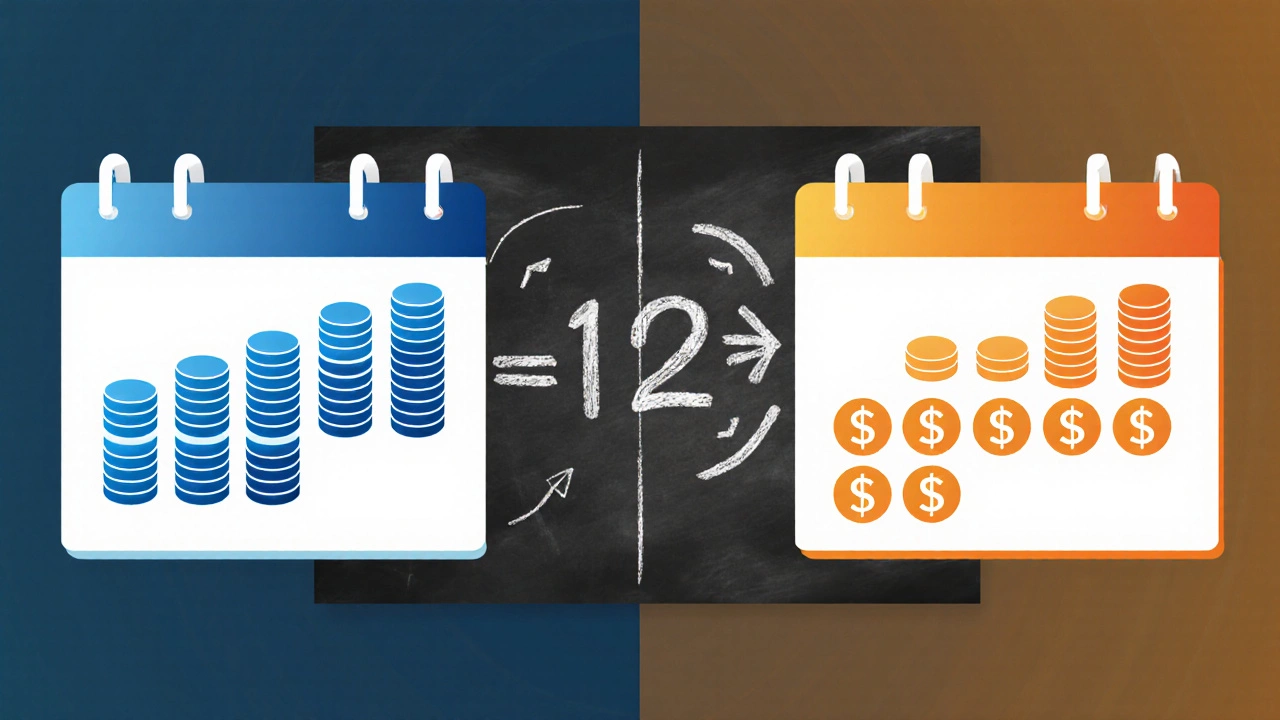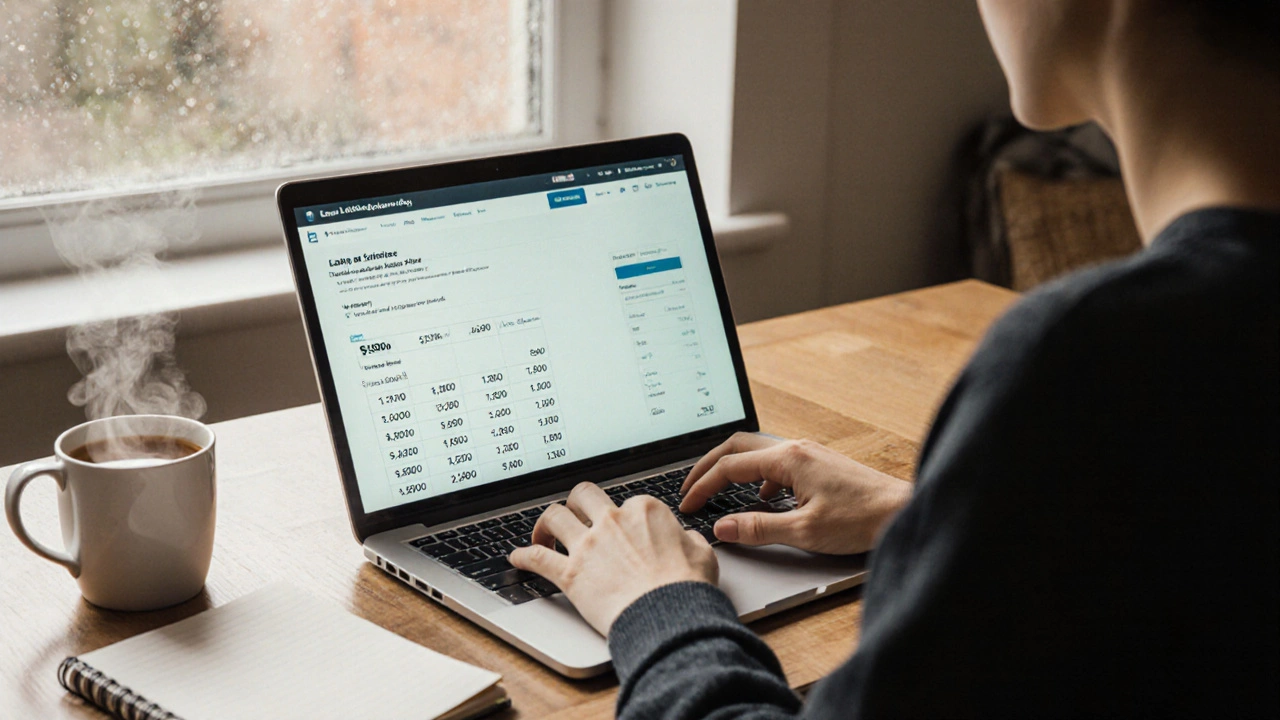Personal Loan Payment Calculator
Calculate your monthly payment for a $5,000 personal loan based on the interest rate, loan term, and fees.
Your Monthly Payment
* Includes 0.00% origination fee
Thinking about borrowing $5,000 and wondering what the monthly bill will look like? You’re not alone. Most people underestimate how interest, fees and loan length combine to shape the payment you actually write a check for each month.
What exactly is a personal loan?
Personal loan is an unsecured line of credit that you receive in a lump sum and repay in fixed installments over a set period. Because it isn’t tied to a specific purchase, you can use it for anything from a home repair to consolidating credit‑card debt.
Key pieces that drive your monthly payment
Before you plug numbers into a calculator, get clear on the five variables that matter:
- Loan amount: In this case $5,000.
- Interest rate (or APR): The percentage the lender charges for borrowing the money.
- Loan term: How many months you’ll be paying the loan back.
- Fees: Origination, processing or pre‑payment penalties that get added to the balance.
- Credit profile: Your credit score and debt‑to‑income ratio influence the rate you qualify for.
The math behind the payment
The standard formula for a fixed‑rate installment loan is:
Monthly Payment = P × r × (1 + r)^n ÷ [(1 + r)^n - 1]
where:
- P = principal (the amount you borrow, $5,000).
- r = monthly interest rate (annual rate ÷ 12).
- n = total number of payments (months).
Let’s break it down with a real‑world example.
Example 1: 5% APR over 24 months
Assume a lender offers a 5% annual percentage rate (APR) and you choose a two‑year term.
- Monthly rate = 5% ÷ 12 = 0.4167% (or 0.004167 as a decimal).
- Total payments = 24.
Plugging into the formula gives:
Payment = 5,000 × 0.004167 × (1 + 0.004167)^24 ÷ [(1 + 0.004167)^24 - 1] ≈ $219.36
So, you’d pay roughly personal loan payment of $219 each month, totaling $5,264 over the life of the loan.

Example 2: 12% APR over 12 months
If you need the cash fast and opt for a one‑year term at a higher rate, the numbers shift dramatically.
- Monthly rate = 12% ÷ 12 = 1% (0.01 decimal).
- Total payments = 12.
Calculation:
Payment = 5,000 × 0.01 × (1 + 0.01)^12 ÷ [(1 + 0.01)^12 - 1] ≈ $444.30
Now you’re looking at $444 a month, or $5,331 total. The shorter term slashes the interest cost, but the monthly hit is much larger.
How fees affect the bottom line
Many lenders tack on a one‑time origination fee-often 1-3% of the loan amount. If you’re charged 2%, that’s an extra $100 added to the principal, turning a $5,000 loan into a $5,100 balance before interest even starts.
Using the 5% APR/24‑month scenario above, the new payment becomes about $223.87, pushing the total cost up by roughly $115.
Using an online loan calculator
Most banks and fintech sites provide a free loan calculator where you simply enter the amount, rate and term. The tool does the heavy lifting and spits out an amortization schedule-an x‑ray of each month’s principal and interest split.
When you compare a few lenders, keep the following checklist handy:
- Annual Percentage Rate (APR) - includes interest and most fees.
- Loan term options - 12, 24, 36 months are common for small personal loans.
- Any pre‑payment penalties - some lenders charge you if you pay off early.
- Eligibility criteria - minimum credit score, income proof, DTI limits.
Factors that can lower your payment
Even if the numbers above feel steep, you have levers to pull:
- Boost your credit score: Moving from a 620 to a 720 can shave 1-2% off the APR.
- Extend the term: Moving from 24 to 36 months drops the monthly amount, but you’ll pay more interest overall.
- Negotiate fees: Some lenders will waive the origination fee if you have a checking account with them.
- Consider a co‑borrower: Adding a spouse with good credit can improve the rate you qualify for.
Quick reference checklist
- Determine the exact amount you need (including any fees you’ll absorb).
- Shop for APRs - aim for the lowest rate you qualify for.
- Pick a term that balances monthly cash flow with total interest cost.
- Run the numbers in a loan calculator before signing.
- Read the fine print for pre‑payment penalties or hidden charges.
Frequently Asked Questions
How do I know which APR I’ll get?
Lenders base the APR on your credit score, income stability and debt‑to‑income ratio. Use a soft‑pull credit check tool or ask the lender for a pre‑approval quote to see the exact rate.
Can I pay off a personal loan early without penalty?
Many lenders allow early repayment, but a few charge a pre‑payment fee to protect their interest earnings. Always check the loan agreement for a “pre‑payment penalty” clause.
What’s the difference between interest rate and APR?
The interest rate is the cost of borrowing expressed as a yearly percentage. APR (Annual Percentage Rate) adds most fees into that percentage, giving you a more realistic picture of the total cost.
Do I need a perfect credit score to get a $5,000 loan?
Not necessarily. While a score above 700 lands you the best rates, many lenders approve borrowers in the low‑600s, albeit at a higher APR and possibly a larger fee.
How does a loan amortization schedule help me?
It shows how each payment splits between interest and principal, letting you see exactly when you’ll start paying down the balance and how much total interest you’ll pay.
By running the numbers yourself and comparing a few offers, you’ll land on a monthly figure that fits your budget while keeping the total cost as low as possible.

